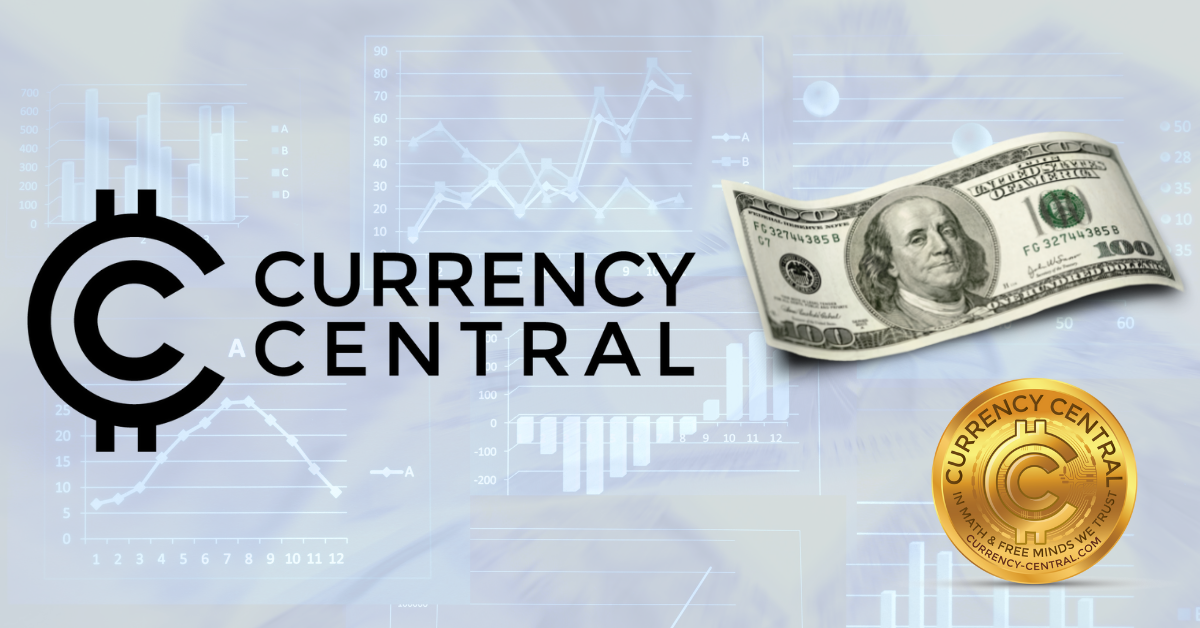Seizing Russian holdings of American debt risks the role of the U.S. in the international system and opens the door to gold and bitcoin.
Amid the dying embers of World War II, in an ornate ballroom in a New Hampshire resort in July 1944, America gathered the imminent victors of the war and designed a new monetary system. Global currencies would be various weights of the dollar, redeemable for gold held with the U.S.
At the time, a British economist spoke up and suggested instead a neutral international settlement medium consisting of a basket of sovereign currencies. This “Bancor” idea proposed by a certain John Maynard Keynes was overruled by the American delegation, which favored the more U.S.-centric dollar-gold standard. From 1944 to 1971, sovereign currencies were simply different weights of the dollar, redeemable (albeit infrequently) by the governments themselves for actual gold at a rate of $35 dollars an ounce.
The tether was tenuous, however. The entire system depended on the beneficence of the U.S. government and its willingness to not overspend, increasing the ratio of dollars to underlying gold. Things came to a head when the U.S. spent extravagantly on President Lyndon Johnson’s Great Society and the Vietnam War, and sovereigns began to doubt the veracity of America’s promise to redeem currency for gold on demand. In August 1971, France called America’s bluff and dispatched a battleship to retrieve their gold.
Read more: Nic Carter – Bitcoin Mining Is Reshaping the Energy Sector and No One Is Talking About It
President Richard Nixon knew the U.S. could not honor its commitments and defaulted on the promise that had been held since 1944: The U.S. would no longer honor the peg. A decade of ruinous inflation followed, and the U.S. was only able to stabilize the dollar through enormous rate hikes, in combination with the inventive petro-dollar scheme. This latter device saw the U.S. ally with the oil producers like the Saudis, guaranteeing them military protection in exchange for the exclusive pricing of oil in dollars, combined with the recycling of profits into U.S. Treasurys. With a reliable Treasury bid secured, faith in the dollar that was lost in Nixon’s default was restored.
Other tools facilitated the retrenchment of the dollar in overseas commerce. The U.S. funneled its cheap debt into military spending and became the de facto guarantor of markets globally, ensuring energy and food security for the globe by protecting trade routes with its blue water navy. The U.S. set the rules of the game through their control of the international financial institutions – the International Monetary Fund (IMF) for short-term lending to sovereigns and the World Bank for long-term development finance. The U.S. maintained an open capital account and allowed their securities markets to become a global piggy bank for savers worldwide.

The Mount Washington Hotel in New Hampshire’s the White Mountains where the Bretton Woods conference took place. ((Pavel Brodsky/Unsplash))
Today, the size of publicly traded securities in the U.S. relative to public markets worldwide vastly outweighs its share of global gross domestic product (GDP). U.S. dollars denominate most international trade, even for exchanges occurring outside the country. U.S. Treasurys came to be considered the global risk-free savings device for sovereigns, as the U.S. was presumed to have no default risk whatsoever. The Federal Reserve became the lender of last resort for central banks, willing to create unlimited liquidity to support markets worldwide during times of stress.
Even absent the tether to gold, the U.S. dollar thrived as the dominant medium of settlement internationally, and U.S. Treasurys served as the default savings device globally. Around 2014, however, something began to turn. Foreign government purchases of U.S. debt began to stagnate. Even though foreign purchases of Treasurys eventually picked up in absolute terms in 2018, they didn’t remotely keep up with the expanding scale of the U.S. debt.
In short, foreigners, who had long supported America’s largesse by eagerly buying its debt, were buying less and less of our new debt issuance. Foreign ownership of U.S. debt declined from 34% in 2015 to 24% at the end of 2021. China’s ownership declined from $1.25 trillion in 2015 to under $1.1 trillion in 2021. To compensate for this diminishing outside interest, the U.S. looked inward for new creditors. The Federal Reserve held around 4% of U.S. debt in 2009; that figure has climbed to 19% today.
These purchases, made with dollars summoned out of thin air, come with a giant asterisk – they do not derive from organic demand for our debt. They are only sustainable as long as inflation is tolerably low, which it no longer is (in February, it hit a 40-year high of 7.5%).
The exact explanation for the lost appetite among foreigners for U.S. dollars and U.S. debt is hard to pin down. It may have been a delayed reaction from the 2008 crisis when the Fed made it clear it had the ability to print unlimited dollars to support domestic markets (at the expense of foreigners). It might have been the aggressive sanctions the U.S. instituted against Russian banks after Russia’s invasion of Crimea in 2014 – the most economically powerful nation the U.S. had ever targeted in such a manner.
Previously, sanctions had been reserved for small, economically unimportant nations. At the time, the U.S. threatened to exclude Russia from the SWIFT international transfer system entirely but backed down due to the severity of the measure. Russia took the threat to heart, and its central bank divested most of its U.S. Treasury exposure and set up a SWIFT alternative called SPFS.
Even as the Russians took steps to free themselves from dependence on the dollar system, the U.S. wisely walked back from the brink, realizing that American and European banks were hopelessly intertwined with Russian ones. At the time, President Obama laid out a prescient warning regarding the risk to the dollar system that arbitrary exclusions could pose. In 2015, he cautioned, in the context of unilateral Iran sanctions:
Joe Biden did not heed the warning of his former boss. First, the U.S. seized Afghan central bank assets held in New York and bizarrely handed a large portion over to the plaintiffs in a 9/11 lawsuit. While the seizure may have been predictable, expropriating the savings of ordinary Afghans and distributing them to Americans affected by 9/11, an attack perpetrated by Saudis, is deeply unusual. Partly as a consequence, the Afghan banking system is keeling over, worsening a humanitarian crisis.
Not content with that, Biden then dropped a financial nuke on Russia with the seizure of her reserves.
It’s important to untangle the perceived morality of this action – a reaction to an unjust invasion – and its prudence. While seizing Afghan or Russian reserves may feel righteous and just, the immediate effect of such actions is to completely undermine the credibility of dollar debt as an international savings device. The U.S. wants to have its cake and eat it, too: We need foreigners to buy our debt, so the government can finance its structurally high levels of spending. But we increasingly seek to impose moral conditions on who can hold that debt. The U.S. will find that their creditors are increasingly unwilling to pass these purity tests and will choose to hold money that doesn’t require the owner to comport with Washington’s latest political fashions.
Author Luke Gromen pulled no punches, asserting that the Fed and the European Central Bank (ECB) “completely discredited sovereign debt as an FX reserve, completely,” adding that “the multi-currency, multi-polar world was likely fully born on Wednesday night.” Fed blogger Joseph Wang called the freezes of FX reserves “financial WMDs,” adding that “foreign sovereigns must now diversify as a matter of national security, and some citizens must now diversify as a matter of self-preservation.”
Wang points out that India and China, both of whom voted “abstain” on the United Nations motion to condemn Russia’s invasion of Ukraine, maintain heavily FX-based sovereign reserves that they will now be eyeing uneasily. Russia made the fundamental miscalculation of not realizing all of their foreign fiat reserves were at risk; other nation-states falling afoul of the U.S. will not repeat that mistake.
Most notably, the celebrated Credit Suisse interest rate strategist Zoltan Pozsar declared an end to Bretton Woods II – the post-1971 pure fiat period based on the petrodollar and treasury recycling. “Bretton Woods II was built on inside money, and its foundations crumbled a week ago when the G7 seized Russia’s FX reserves,” he wrote.
While the reach of gold bugs and Fed critics might extend only to narrow echo chambers on Twitter, Pozsar’s words reverberate around the financial community. For once, the difference between gold and dollars is starkly clear. Outside of James Bond novels, gold cannot be immobilized at a distance. Dollars and dollar assets can.
While not as dramatic as the Nixon shock, the Biden sanction was just as genuine a default. U.S. Treasurys in the post-1971 era were the global risk-free asset, used by friends and enemies alike to reliably store value. Rug-pulling the Russians, even if warranted, introduced for the first time genuine doubt into the quality of the commitment the U.S. can maintain towards foreign creditors. The prospect of total asset invalidation is an unacceptable tail risk, and any nation-state wary of falling afoul of U.S. sensibilities, especially as the U.S. becomes ever more capricious and less interested in the well-being of the international sphere it used to govern, will consider diversifying out of U.S. Treasurys and other freezable assets.
In 2022, Pozsar’s “outside money” is king. For now, that’s gold, but even the former skeptic has some time for its digital-analog, concluding: “Bitcoin (if it still exists [after the war]) will probably benefit from all this.”
DISCLOSURE
The leader in news and information on cryptocurrency, digital assets, and the future of money, CoinDesk is a media outlet that strives for the highest journalistic standards and abides by a strict set of editorial policies. CoinDesk is an independent operating subsidiary of Digital Currency Group, which invests in cryptocurrencies and blockchain startups. As part of their compensation, certain CoinDesk employees, including editorial employees, may receive exposure to DCG equity in the form of stock appreciation rights, which vest over a multi-year period. CoinDesk journalists are not allowed to purchase the stock outright in DCG.

